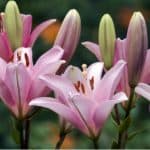Last updated on May 17th, 2022
Our site is reader supported, this means we may earn a small commission from Amazon and other affiliates when you buy through links on our site.
Asters are perennials that are known for bringing a lot of colourful flowers at the end of the summer and autumn when other flowers might be starting to fade. They take on the appearance of a daisy and because there are so many varieties available, the height of the Aster plant you have can range between 20cm and up to a metre.
That being said, you can find Asters that attract bees and butterflies and fill any space in your garden.
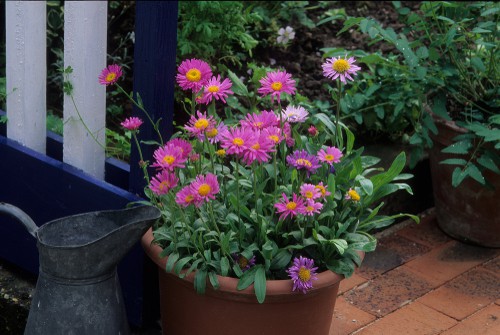
Planting Asters
Asters will grow best in areas that have cool, moist summers that have cooler temperatures, much like most of the UK. They don’t like the hot summer sun in the middle of the day so it’s important to pick an area in your garden that has something between full sun and partial sun. The soil should be well-drained and you can mix some good quality compost into the soil before you plant them in order to amend it.
Sowing seeds
Sowing seed indoors
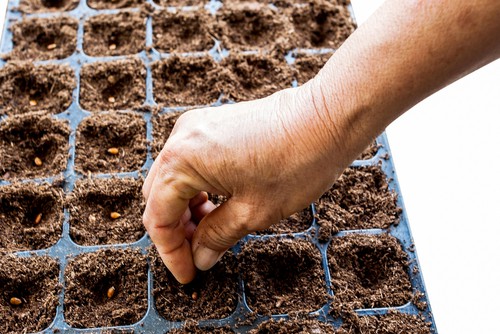
If you try to propagate from seed the germination can be somewhat uneven but that doesn’t mean it isn’t worth trying. You can still choose to start the seeds indoors about 5-6 weeks before the last frost, so for the UK is usually around April, but you can sow them a little earlier than this too.
Sow them in seed or multi-purpose compost, in trays around 0.5cm(1/4in) deep. Keep soil moist and keep it in a warm place until they germinate which is usually around 2-3 weeks. Transplant them into larger pots, 7-9cm pots are ideal and grow them on until they are hardy enough to plant out.
Sowing seeds outdoors
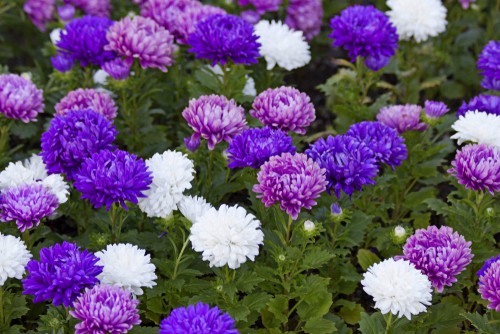
You can sow Asters outdoors between April and May, in finely prepared soil and plant seeds around 0.5cm(1/4in) deep, keeping them moist at all times. Once they are germinated you may need to thin them out so that each plant is 30cm apart from another.
When should you plant them?
The best time to plant them is between the middle of spring to the end of spring. Fully grown plants can be purchased from nurseries or garden centres as an alternative to growing from seed.
Allow enough space for the variety you choose and mulch around the base of plants
Be sure to space them between 30cm and 1 metre apart depending on the type and how large they get once they are fully established. When you plant them, give them lots of water and add mulch around the base of the plant to cool the roots because they are generally shallow rooted. This mulching also helps prevent any weeds from growing.
Caring for Asters
You should add a thin layer of compost with mulch around your plants annually in the spring to help encourage regular growth and help with moisture retention. Keep plants well-watered because they prefer moist fertile soil that is well-drained, they don’t like having wet feet.
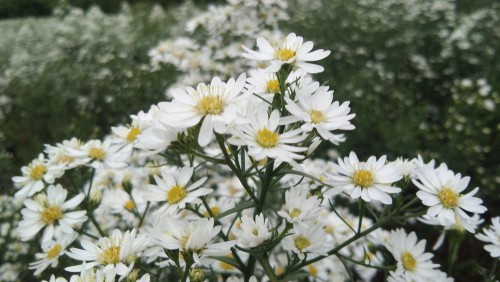
Watering regularly, especially during dry spells
They are very moisture sensitive so they might not flower as well if they receive either too much watering or too little watering. So pay particular attention to the signs of a stressed plant and try to change your watering habits first.
Stake taller varieties to stop them from falling over
To prevent them from falling over you can stake the taller plants. You can pinch them back once or twice at the beginning of summer and this will help them to produce more flowers and help form a bushier plant. In winter, once all the foliage is dead, you can cut them back to ground level and add a layer of mulch to help protect the roots.
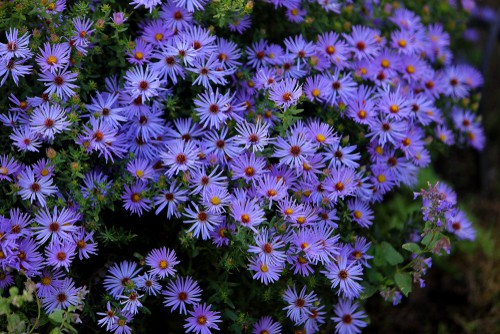
Dividing Asters
As with most perennials, it’s important to divide them every three or four years in the spring to help the plants stay healthy and floriferous.
You can learn more about how to divide perennials in this guide here.
Pests and Diseases
Asters are very susceptible to some of the more common issues, like powdery mildew or leaf spot. These are diseases that usually manifest in the summer when there is inadequate air circulation and warmer temperatures.
Be careful how you water, look out for signs of mildew and remove any affected leaves and spray with a fungicide.
They are also susceptible to slugs and snails which you can prevent through a variety of measures including eggshells around the perimeter of your plants, beer traps and copper wire. Aphids are another pest problem that needs to be removed by spraying them off using a soap solution or using a pesticide spray for more serious infestations.
Last update on 2025-04-21 / Affiliate links / Images from Amazon Product Advertising API







